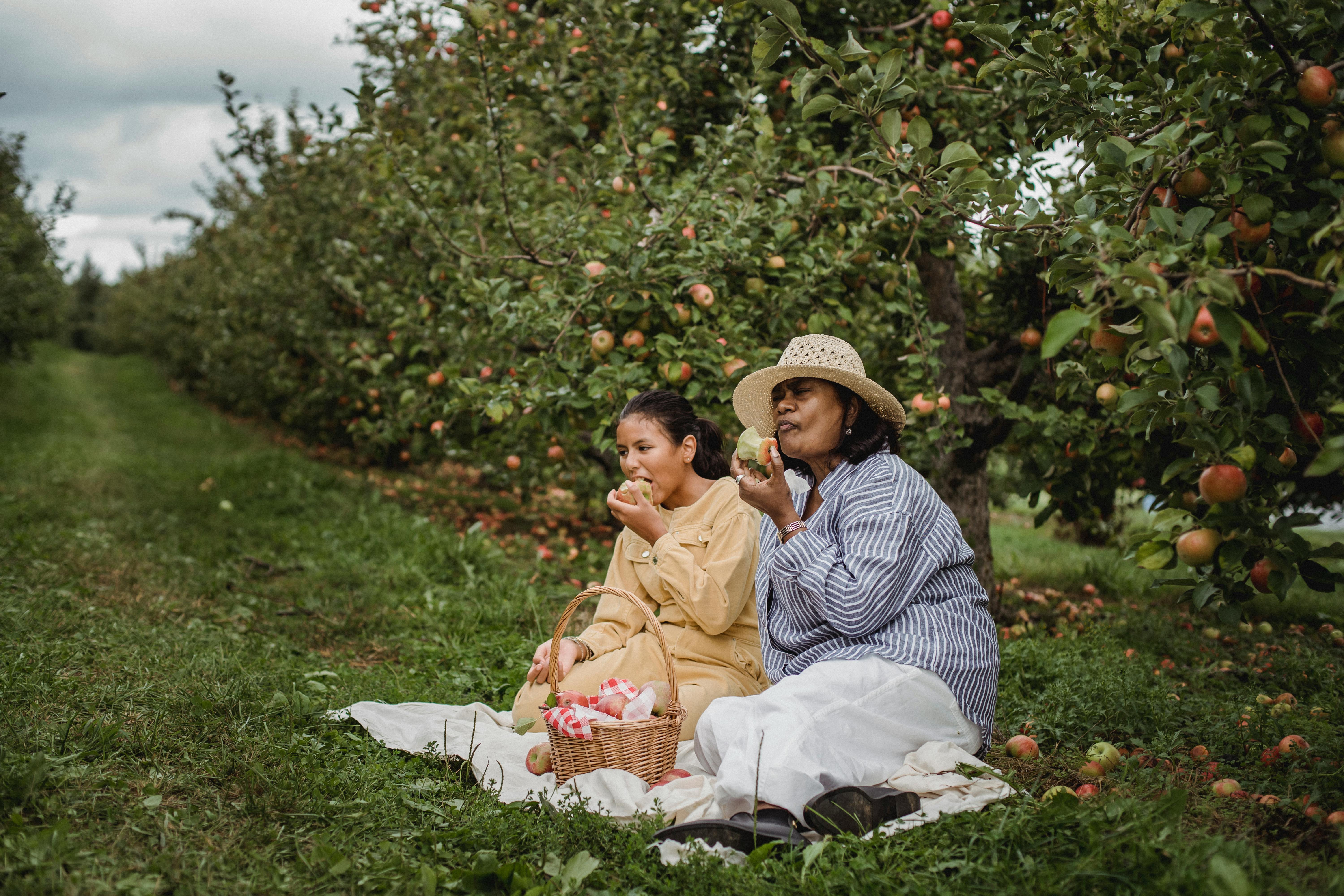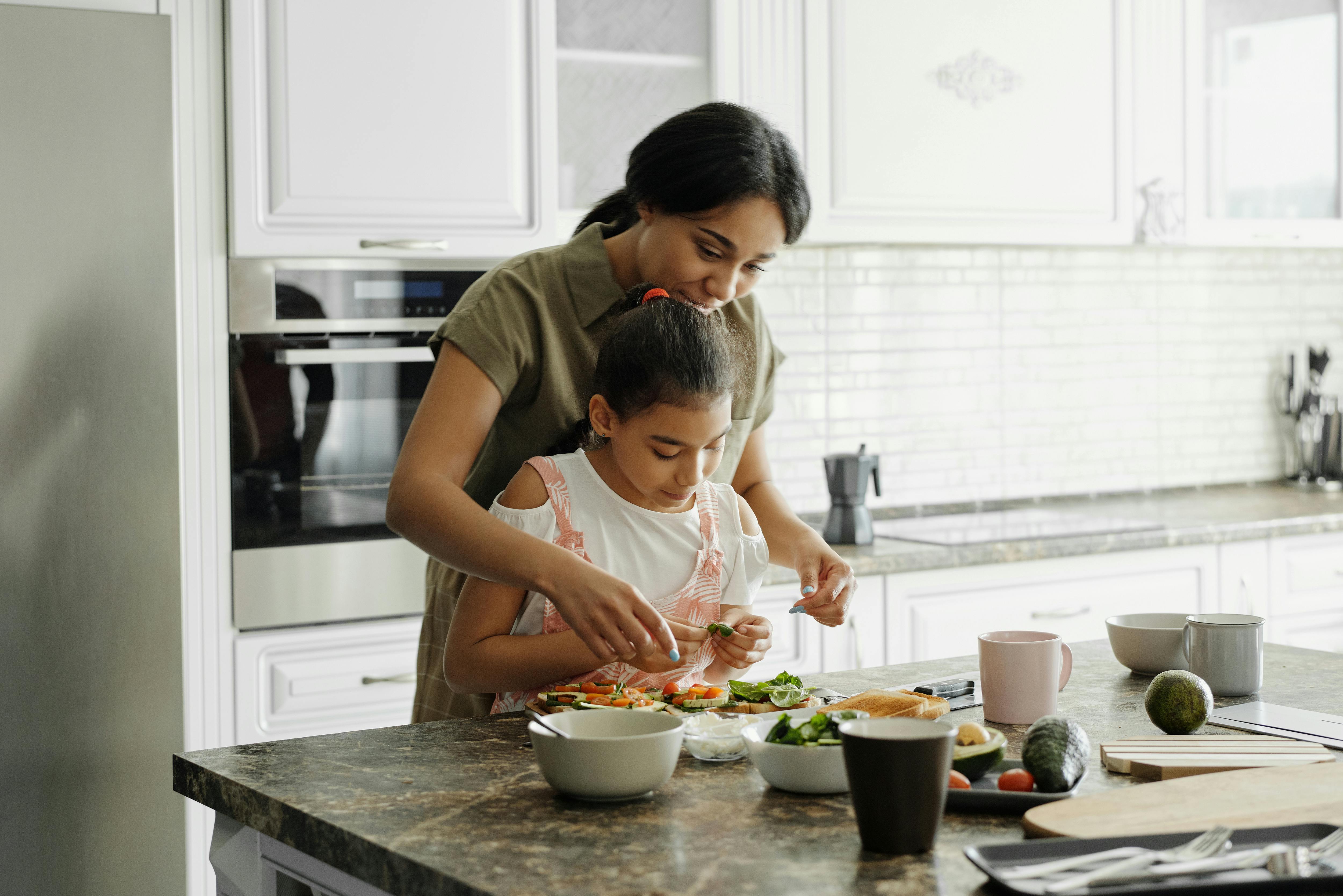Ecuador Family Food Guide: Make Healthy Eating Habits Stick (2025)
Let’s be honest—anyone who’s tried to overhaul their family’s eating habits knows it’s harder than it looks. Between work schedules, the school run, picky eaters, and the delicious (if somewhat greasy) street food wafting through every Ecuadorian town, “healthy eating” can easily become another failed resolution on the fridge. I’ve seen it a hundred times, and frankly, lived it myself.
But here’s what gets me: Ecuador, with all its vibrant communities—from the misty Andes to the bustling markets of Guayaquil—offers a surprisingly robust blueprint for building healthy food routines that stick for busy families. Not in a “get fit quick” way, but in the quiet, steady, culturally rich manner that gets passed down through abuelitas and Sunday almuerzos.
So why do so many of our best intentions fall apart by Thursday? The honest answer: our modern lives are demanding, and most nutrition advice is too abstract. Here, I’m going concrete—sharing what works in Ecuadorian families (and mine), scientific insights, a few tried-and-true hacks from my own food-loving, chronically-busy kitchen, and practical templates anyone can use—no matter where in the world you call home.
Why Ecuador? What Sets This Guide Apart
Before we dive in, let’s confront the question head-on: “Is Ecuador really the model for healthy, busy-family eating?” My answer’s a qualified yes. Why? In Ecuador, the daily food rhythm hasn’t been totally bulldozed by hyper-industrialized routines. Most families (even in cities) still eat at home far more than much of the global north1. Markets overflow with affordable fresh produce. There’s a culture of community meals, portion control rooted not in restriction but in tradition, and a healthy skepticism toward ultra-processed foods—a skepticism that’s vanishing fast in the west.
I’m not saying Ecuador is immune to the junk-food tsunami (far from it—just ask my kids about ice cream), but the foundations are strong. The real kicker? The healthiest eating families I’ve met here aren’t following “diets” at all—they’re just leaning into rituals, habit stacking, time-honored dishes, and community accountability. And, honestly, that struck me the most when I moved here eight years ago.
According to government reports2, Ecuador remains one of Latin America’s top consumers of fresh fruit per capita—even in the age of globalized snack foods.
Foundations: The Science of Family Nutrition
Let me be clear: culture is important, but foundational nutritional science still applies. Multiple large-scale studies—spanning Andes villages to European metropolises—show that children and adults alike thrive on balanced, mostly minimally-processed diets, with lots of variety and repeated family mealtimes3. The more meals you eat together, the more fruits and vegetables everyone seems to consume—especially kids4. Beyond that, consistent routines (vs. spontaneous, last-minute eating) lead to better weight regulation and lower long-term disease risk5.
Now, am I suggesting you must cook three full meals a day with hand-ground spices and zero convenience foods? Absolutely not. No one has time for that—especially not working parents. But where Ecuador excels is in weaving small, repeatable food habits through daily life. That’s what this guide is about: not “perfection,” but consistency and translation.
Real habit change for families starts with small, positive patterns—often connected to existing routines, not big, disruptive overhauls.
Let that sink in for a second. Most nutrition fails, at least in my view, happen because the plan is too big, too fast, and not rooted in the lived reality of family dynamics. When food fits the flow of your family’s life—school pickups, market days, soccer practices—it sticks. When it fights against it, forget about it.
“The best dietary approach is the one you can maintain—that fits your family’s cultural patterns, tastes, and real schedules, not someone else’s perfect plan.” — Dr. Mónica Villalba, Ecuadorian Dietitian & Public Health Researcher
Next, let’s dive into how Ecuadorian food customs—alongside up-to-date nutrition research—can deliver exactly those kinds of habits for real families. And why that matters الآن, as more and more Ecuadorian (and global) families confront a rising tide of diet-related health conditions6.
Ecuadorian Food Culture: Lessons for Modern Families
Let’s get into the heart of the matter: what makes Ecuadorian food tradition such a potent resource for families who want healthier habits? It isn’t about exotic superfoods, or a romanticized image of barefoot grandmothers grinding corn by hand. Actually, it’s the very ordinariness: fresh, varied ingredients, routine body-and-soul foods, and a rhythm that prioritizes community.
- Market-first shopping: Most Ecuadorian families buy produce from open-air markets multiple times a week. This means meals are often built around what’s fresh, local, and at its seasonal peak7.
- Simple breakfast foundations: Instead of sugary cereals, mornings often start with plantains, eggs, and fresh juices.
- The almuerzo system: The midday “almuerzo” (lunch) is often the main meal, involving a starter soup, a protein with grains, and plenty of vegetables. Dinners are usually lighter—a practice backed by a growing body of metabolic research8.
- Limited processed snacks: Yes, chips and colas exist, but most snacking leans towards fruit and home-cooked treats, not hyper-packaged options9.
- Community mealtime: Family meals are about togetherness—devices off, everyone sat (even if chaos reigns for 10 of the 25 minutes).
Build your family menu around what’s local and in season—even if “local” means the neighborhood supermarket. Start with one new habit per week, not five.
I remember my first market visit in Cuenca. The colors, smells, and vendor banter—all felt overwhelming, even with a grocery list in hand. These days, my kids drag me by the hand toward their favorite tomato stand. The shift didn’t happen overnight, but it stuck because it became a shared ritual, not a chore. Habits built around community—and pleasure—tend to last longer, in my experience anyway.
How Ecuadorian Meals Are Structured (And Why It Matters)
| وجبة | Typical Components | Nutrition Highlight |
|---|---|---|
| إفطار | Plantains, eggs, fruit juice, bread/cheese | Steady energy, micronutrients, protein |
| Almuerzo (Lunch) | Soup starter, protein+grain, salad, fresh fruit | Balanced macronutrients, hydration, fiber |
| Merienda (Dinner) | Lighter fare: avocado, cheese, soup, fruit | Easier digestion, lighter caloric load |
Notice anything? There’s a recurring pattern of balance and simplicity—no precision calorie counting, just logical, emotionally-satisfying combinations based on what’s available and affordable.
“Busy doesn’t have to mean unhealthy. Borrow from Ecuador’s lunch system: make midday meals the star, and save lighter fare for the evening.” — Laura Romero, Quito-based nutritionist and mother of three
Actionable Habit-Building Strategies (Rooted in Ecuadorian Wisdom)
This is where so many families—including my own—tend to stumble. We get fired up, run out for a trolley’s worth of chickpeas and chia seeds (which no one eats), then retreat to old routines. Here’s what worked better for me, and for many Ecuadorian homes:
- Start with “anchor meals.” Choose one meal per day (typically breakfast or almuerzo) to transform first. Make this meal as healthy and enjoyable as possible—like a hearty locro soup with avocado and a side of fresh fruit.
- Habit stacking: Attach the new food habit to something you already do (like prepping veggies while kids do homework, or Friday “ensalada night”). This idea isn’t new, but Ecuadorian families are expert at weaving food routines into daily rituals.10
- Share the load: In Ecuador, cooking is rarely a one-person job. Even toddlers help wash veggies or stir soup. Delegate tasks, and meals become family moments, not just parental burdens.
- The “producción” approach: Instead of daily full-meal prep, batch-cook foundational ingredients (like lentils, rice, or roasted roots) on weekends for easy mix-and-match access all week.
This week, pick ONE Ecuadorian-inspired meal for the whole family to try. Get everyone involved—even just in setting the table—and talk about what you all liked (or didn’t!).
The point isn’t dietary perfection; it’s forward progress, tied to moments you’ll actually remember. I still laugh about the time my youngest insisted on adding banana to our ceviche—her face said it all, and now “banana challenge night” is a household tradition.

Realistic Adaptations for Busy Schedules
I know—the main reason most families fall off the “healthy eating” wagon isn’t lack of knowledge, but real-world time crunches. Soccer pickups collide with work deadlines, and suddenly the “quick” solution is whatever’s in the freezer. Here’s the real kicker though: Ecuadorian food habits, at their best, are surprisingly forgiving for busy people. It’s about adaptation, not rigid planning.
- Market “speed rounds”: A ten-minute stop at a fruiteria on the school run nets a basket of in-season fruit—and often a free recipe from the vendor. Regular quick stops beat one mega-trip every two weeks.
- Batch foundations: Cook double the lentils or rice and freeze half.
- Instant flavor boosters: Little jars of ají (chili sauce) and lime brighten up leftovers—even the third night in a row.
- “Snack prep” Sundays: Slice fruit and portion nuts before the week begins. In my family, if fruit’s visible, it gets eaten.
One mistake I kept repeating early on? Trying to make every meal Instagrammable. Reality-check: weekday meals are often “good enough,” not culinary masterpieces. That’s OK, and, honestly, it’s the case in most Ecuadorian homes I’ve visited, too.
“Don’t aim for perfect. The healthiest families I’ve observed get the basics right most days and treat every meal as a fresh start.” — Dr. Pablo Mena, Public Health Advisor, Ministry of Health of Ecuador
Common Ecuadorian Ingredients for Fast, Family-Friendly Meals
| المكونات | Quick Use Idea | Nutrition Perk |
|---|---|---|
| الموز الجنة | Sauté rounds with eggs for breakfast or mash for a quick side | Filled with potassium, complex carbs |
| Quinoa | Batch cook and toss into soups, salads, or stir-fries | Complete protein, iron, fiber |
| Fresh Cheese (Queso Fresco) | Crumble on veggies, arepas, or bread | Calcium, protein, satisfying flavor |
| Yuca (Cassava) | Boil, slice, and serve with herbs or salsa | Energy, vitamin C, gluten-free |
Create a “build-your-own” almuerzo bar one weekend: precooked grain, protein, chopped veggies, a few sauces. Let everyone assemble.
Overcoming Common Barriers to Lasting Change
Even the most motivated families—and I include my own here—hit walls. Let’s name a few common ones, and how Ecuador-style thinking can help.
- Picky Eaters: Endless chilhood food battles are common everywhere. In Ecuador, repeated tiny “tasting portions” (rather than force or threats) are standard, and research backs that this eventually works11.
- No time to cook: Prepped basics and “mix-and-match” setups (like the almuerzo table above) mean hot food in 10 minutes, not an hour. I struggled with this for years before seeing it in action at Ecuadorian friend’s homes.
- Tempting fast food nearby: In Ecuador’s cities, colas and fried snacks lurk at every corner. Many families manage by channeling cravings into “Friday treat night”—anchored to specific moments, not open season every day.
- Cultural resistance: Introducing new foods can spark pushback from older relatives. My take? Keep family staples, add just one tweak at a time, and involve those skeptical voices in market shopping or meal prep.
Quick personal story: In our home, market day used to be a solo mission (just me, with a list). The shift to collective market shopping—it wasn’t quick, honestly—but now, even my skeptical father-in-law volunteers “his” cheese stall. Everyone claims a win, everyone eats more variety, and the friction melts away.
Which challenge resonates most for you? List one Ecuador-style tweak you could try this week, and see who in your family’s most up for it!
Feature: Family Food Systems—Not Just “Diet Plans”
What really strikes me, decade in, is how well Ecuadorian families build systems versus following diets. That means default settings (like veggie-first sides, or fruit as the go-to dessert) become so routine, they require less decision-making—essential for busy minds.
- Keep fruit bowls at the center of the table.
- Soup pots always on the stove for quick, healthy fill-ups (try “caldo de pata” or “locro de papa”).
- Leftover beans or rice are never wasted; they’re feedstock for the next meal.
- Everyone has a food “job”—from setting the table to cutting limes.
It’s these daily, embedded micro-routines that resist stress and chaos the best. I can’t emphasize enough: building a family system, not just a list of healthy recipes, is the game-changer I never saw coming.
Quick Resources, Recipes & Family Activity Starters
At this point in time, most families crave not just advice, but practical takeaways. So here’s my field-tested toolkit—stuff that’s worked in our Ecuadorian kitchen and many client families from Quito to Miami. You can pick and choose what fits your own rhythms, budget, and ingredients.
- Easy Recipe: Sopa de Quinoa. Simmer chopped onions, carrots, potatoes with garlic, cumin, and a couple of handfuls of quinoa for ~15 min. Finish with fresh herbs and a squeeze of lime. It’s a one-pot wonder, ripe for improvisation.
- “Mix-and-match” lunch bars. Cook a big batch of brown rice/quinoa and lay out options: avocado, beans, sliced tomato, queso fresco. Let the kids build their own bowls—less fighting, more eating.
- Fruit dessert swaps. Replace store-bought dessert twice a week with fruit salad—papaya, pineapple, banana, whatever’s in season, sprinkled with lime juice.
- Family Cooking Challenges. Let kids pick a new Ecuadorian veggie (“chocho,” “oca,” “melloco”) and lead a meal, even if messy. The key is shared adventure, not flawless outcomes.
Make Sunday “market story” day for a month—take one quick photo at the market or grocer together and talk about how each item grows, or who brought it to your table. Turns routine shopping into a playful, ongoing education.
Conclusion: Growing Habits That Endure
If there’s one thing Ecuador has taught me—sometimes the hard way—it’s that lasting healthy eating isn’t about a big breakthrough. It’s about a hundred small, repeatable, forgiving routines grounded in community, pleasure, and practicality. The healthiest Ecuadorian families I’ve met are rarely those with the most money, the rarest ingredients, or the tightest discipline, but the ones with the friendliest routines and the greatest willingness to adapt.
“Food is the heartbeat of a family’s daily life. When meals work, so much else falls into place. Start small, start with joy, and everything moves from there.” — Alondra Espinoza, Community Health Promoter
My genuine hope? That you’ll take at least one habit from this guide—however messy and imperfectly it begins—and watch it slowly, stubbornly transform your family’s health, togetherness, and food story.
مراجع



